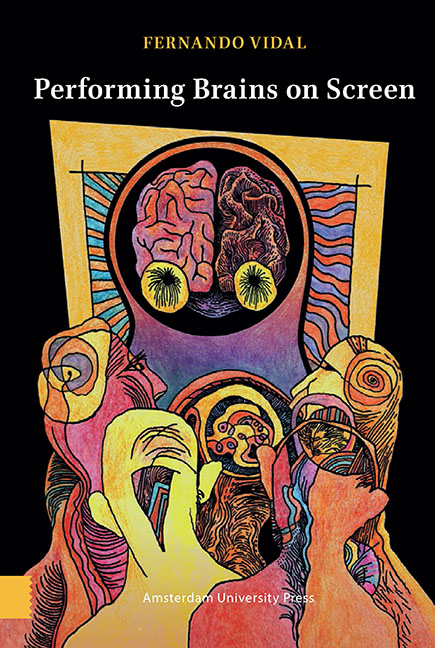Book contents
Summary
Abstract
Brain-themed plots, characters, and settings cut across both genres and media. Particularly strong is the narrative and iconographic kinship between science fiction “pulp magazines” and B brainfilms. Pulp sci-fi was popular in the USA between the late nineteenth century and the 1950s. This chapter focuses on the brain motif in pulp “scientifiction” stories and visuals of the 1920s to 1930s – years that saw the emergence of the first filmic brain in a vat, and other brain motifs that would later appear on screen, such as the mad brain scientist, brain manipulation and transplantation, brains in jars, or brain-mediated immortality. It also describes the place of “scientifilm” in pulp fantasy and magazines’ commercial strategies, and outlines resonances between brainfilms and sci-fi pulp.
Keywords: B movie, brainfilm, pulp magazines, science fiction, scientifiction, transtextuality
This is a book about movies. Why, then, devote a chapter to magazines? As mentioned, the brain motif cuts not only across filmic genres, but also across media. Variations of the plots, characters, and settings we see on screen can be encountered in literatures of diverse kinds, long and short, high and low. Yet no connection has been stronger than that between “pulp magazines” specializing in science fiction (SF) and brainfilms of the B-to-Z sort. Popular in the United States between the late nineteenth century and the 1950s, the name by which those inexpensive magazines are known derives from the wood pulp paper on which they were printed. The New Republic in 1929 and Vanity Fair in 1933 called them “magazines for morons” and “day-dreams for the masses” (Cheng 2012, 20). Not for nothing, what the empty-headed fashion model Marion distractedly reads during a photo session in the musical Funny Face (1957) is Minute Men from Mars, a comic book whose colorful cover evokes the alien-invasion pulp aesthetic. Though in an exclusively negative mode, highbrow commentators’ disdainful assessments betray discomfort at the huge repercussion of those magazines on the individual and the collective imagination.
Pulps are “paraliterature” (Baldick 2015, 266; Boyer 2008) in the same way that so many B-to-Zs are paracinema. While, like the latter, they have become cult and worthy of scholarly attention, they are hardly known beyond fans and specialists.
- Type
- Chapter
- Information
- Performing Brains on Screen , pp. 35 - 86Publisher: Amsterdam University PressPrint publication year: 2022



